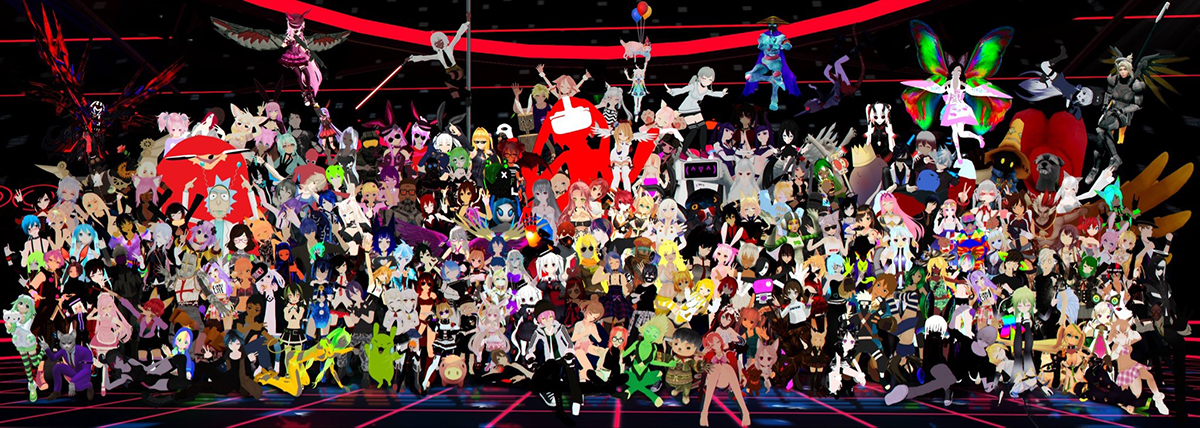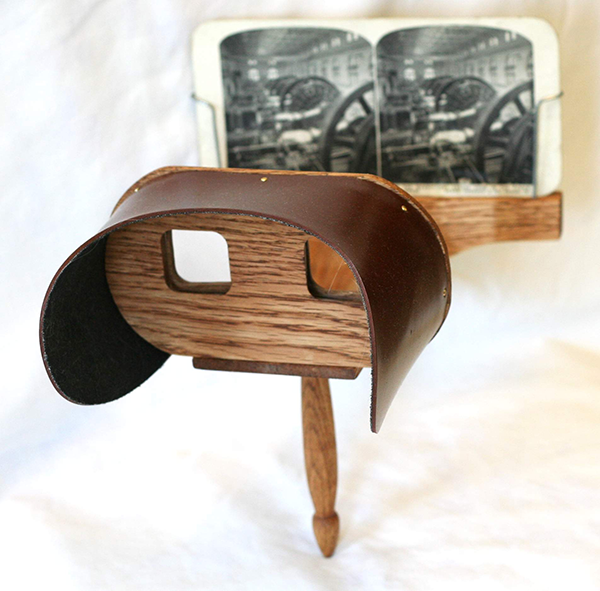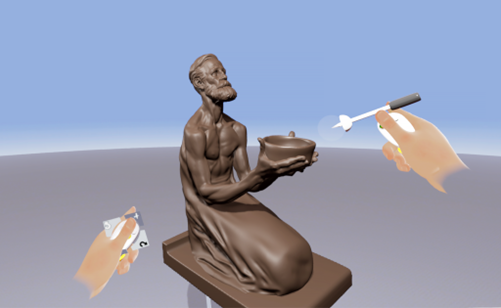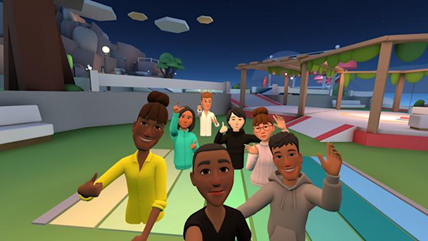The Metaverse and Virtual Reality: A Brief Past, Present, and Future

We as humans have been toying with the idea of virtual reality (VR) for about as long as we’ve been able to capture it.
 Twelve years after the first photograph was taken, we took the first baby step towards
a true VR: the Stereoscope, invented in 1838. Surprisingly, the base design of VR
headsets has stayed mostly similar throughout the centuries - as you can see from
this image of one of the earliest stereoscopes.
Twelve years after the first photograph was taken, we took the first baby step towards
a true VR: the Stereoscope, invented in 1838. Surprisingly, the base design of VR
headsets has stayed mostly similar throughout the centuries - as you can see from
this image of one of the earliest stereoscopes.
Two glass panes peering into the same image from slightly different perspectives to create the illusion of depth - that’s what VR is in its simplest terms. But as technology advances at such an insane pace, we’ve been getting better and better at blurring the lines between our reality and the Metaverse.
But what exactly is the Metaverse? In pop media, it’s been Mark Zuckerberg’s catch-all term for his biggest endeavor recently - Oculus Rift and its flagship Metaverse game, Horizon Worlds. Ironically, the term “Metaverse” was coined from Neal Stephenson’s dystopian novel Snow Crash, where it was the last escape from the dystopian hellscape that was the real world… yeah… The thing is, though, despite what Mark Zuckerberg might lead you to believe, fully virtual “Metaverses” have been around for over two decades now.
Second Life and VRChat
Second Life is widely attributed to being the world’s first legitimate “Metaverse.” Created in 2003, Second Life is a completely free massively multiplayer experience with custom worlds, custom avatars, and even a full-fledged economy. To many, Second Life was and still is precisely what its name implies. More recently though, we can look at VRChat, released in 2014. VRChat, despite its name, can be played in VR or on PC. It too has a plethora of custom models and worlds that can be accessed for free, as well as impressive technical advancements like supporting full body tracking and haptic feedback suits that further blur the line between real and virtual.
So why would someone choose to play a game like VRChat? Well, speaking with one of my close friends, an avid VR user whose name I’ll keep anonymous, “I started playing as a joke. I didn’t think I would get as hooked as I did . . . It’s like an entirely different world where you can be whoever you want and meet whoever you want.” But the feelings go deeper than this. As you can imagine, many see VR as a way to escape. “Being in VRChat is definitely an escape mechanism. It feels like I’m getting another shot to be who I see myself as. It lets me be the best version of myself in a completely new environment with the chance to meet a lot of nice people without any of the anxiety.”
"I started playing as a joke. I didn’t think I would get as hooked as I did."
Both VRChat and Second Life were able to hook and then build their fan bases through escapism and creative expression. Since both these games allow you to import and share your custom 3D models, players can truly personalise their avatars with their only limit being themselves. Users can work with a variety of different programs to create custom models, such as Blender, Unity - or even Adobe’s main program for VR sculpting: Medium.
Medium by Adobe
 Medium by Adobe (formerly Medium by Oculus) is a state-of-the-art 3D sculpting program
made specifically for VR. Honestly, it’s no surprise that VR would be a perfect outlet
for 3D modeling, as now artists can fully manipulate and sculpt their creations to
scale right before their eyes. But the real burning question is - can/will VR sculpting
programs like Adobe Medium replace traditional desktop modeling software?
Medium by Adobe (formerly Medium by Oculus) is a state-of-the-art 3D sculpting program
made specifically for VR. Honestly, it’s no surprise that VR would be a perfect outlet
for 3D modeling, as now artists can fully manipulate and sculpt their creations to
scale right before their eyes. But the real burning question is - can/will VR sculpting
programs like Adobe Medium replace traditional desktop modeling software?
After some internet sleuthing, the general consensus I could find is: not yet. Besides the fact that Adobe Medium is quite hardware intensive, it’s also only good for big-picture modeling. Many reviewers recommend either using it as a fun toy or making rough passes with it and editing the finer details on desktop.
The Awkward Stage
What we need to remember is that modern commercial VR technology is still in its pre-pubescent tween years. The story of VR as we know it today begins with Palmer Luckey, the creator of the first Oculus headset in 2010. And just like our own tween years, it’s an awkward, clunky stage of life.
One of the largest, most persisting issues VR has been facing since 2010 is trying to break down the gimmick stigma. Many people still view VR as a neat toy to mess around with and gawk at rather than the next stage of technology for humans that so many (including the Zuck himself) seem to want it to be. But in reality, the doubters have a lot of merit.
Even today, using VR can be pretty brutal. The first thing you’ll notice is how heavy the headsets are. As you can imagine, strapping a 1-2lb rig right to your face can get a little irritating after prolonged use. Once you start using some programs, the next thing you’ll notice is the motion sickness, which you’ll just have to push through for about the first week of using VR before your brain gets used to it. Also, and this is something not many people mention, is the ungodly amount that you’ll sweat. With many VR games being so physical, like Beat Saber or Blade & Sorcery, you can imagine that your body can only take about 3-4 hours of VR before you have to take a break.
VR has a long way to go, but it seems that Mark Zuckerberg has taken full measures into pursuing his Metaverse dream. Year after year, Meta is releasing smaller, cheaper, and more powerful VR headsets. As well as that, competing companies like HTC and Valve are also taking big strides in VR technology. Personally, however, I’m not sure if Mark Zuckerberg has his priorities straight.
Horizon Worlds
As I said before, VRChat and Second Life were fuelled by the creative freedom they allowed their fanbases. Meta’s Horizon Worlds on the other hand is a completely different story. As of today at least, it seems like Horizon Worlds is far behind the competition. For one, as of today you still can’t import your own custom models. Instead, you have to use their in-house avatar creator and world builder, and staying within the weird, watered-down corporate standards of Horizon Worlds simply makes it unattractive to habitual VR users (not to mention the fact that the avatars still don’t even have legs).
 So if Horizon Worlds doesn’t appeal to frequent VR users, what about the general public? Well, as I mentioned
before, VR is simply a fun gimmick to most. It’s still too clunky and awkward to use
as a real tool, so I’d imagine that most of the general public wouldn’t want to spend
time sweating bullets while playing a half-decent, behind-the-times VR game. Furthermore,
why play Horizon Worlds and be forced to play as yourself when you can play VRChat as essentially anything you can imagine?
So if Horizon Worlds doesn’t appeal to frequent VR users, what about the general public? Well, as I mentioned
before, VR is simply a fun gimmick to most. It’s still too clunky and awkward to use
as a real tool, so I’d imagine that most of the general public wouldn’t want to spend
time sweating bullets while playing a half-decent, behind-the-times VR game. Furthermore,
why play Horizon Worlds and be forced to play as yourself when you can play VRChat as essentially anything you can imagine?
As put by my friend earlier, VR is used by many as an escape. This is one crucial thing that I think Mark Zuckerberg is missing. He’s putting too much effort into making Horizon Worlds like real life. You can see this first hand by checking out their website - on the front page you see advertisements for virtual concerts, comedy clubs, and even full-blown offices. While these are all cool, none of these allow you to escape and just be someone different for a while - they all still require you to be yourself.
 Granted, these are all fixable issues, and it seems like Mark has been listening.
There’s been word of Horizon Worlds finally allowing the import of custom 3D models, and as the game evolves alongside
VR technology, it has the potential to surpass VRChat as the biggest VR social platform. In the future, I can certainly envision lightweight
and portable VR headsets powerful enough to play current-gen VR titles. That, alongside
massive leaps in tracking and haptic technology, means we might be around just long
enough to see a full Ready-Player-One Metaverse.
Granted, these are all fixable issues, and it seems like Mark has been listening.
There’s been word of Horizon Worlds finally allowing the import of custom 3D models, and as the game evolves alongside
VR technology, it has the potential to surpass VRChat as the biggest VR social platform. In the future, I can certainly envision lightweight
and portable VR headsets powerful enough to play current-gen VR titles. That, alongside
massive leaps in tracking and haptic technology, means we might be around just long
enough to see a full Ready-Player-One Metaverse.
I’ll leave it up to you to decide whether or not a full-fledged Metaverse is concerning or not, but as for now, I think VR is a fascinating new technology, and I’m fully invested in seeing how far it can be taken. While I think that Mark Zuckerberg is trying to do too much too early, he has still just barely dipped his feet into the world of VR. Until VR technology becomes small and affordable enough to become globally accessible, however, I think it’s cursed to be stuck in the stigma zone.
